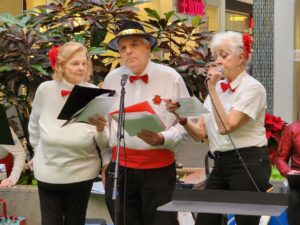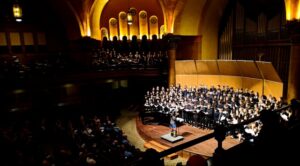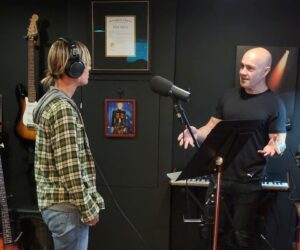Introduction
Are you looking to enhance your singing skills and work on your pitches? Singing is a beautiful art form that requires practice and a good understanding of vocal range. At Peak Music Studios, we offer singing lessons and classes that focus on developing and improving your vocal abilities. One crucial aspect of singing is mastering your pitches, which refers to the range of notes you can comfortably sing. In this blog post, we will delve into the concept of vocal range, specifically exploring the F5 note, which is found within the vocal range of alto, mezzo-soprano, and contralto voice types. Because we train lead vocalists in our studio, we don’t adhere to these traditional classifications, but as a singer with a well-rounded voice knowledge base, these are concepts that are helpful to understand. Join us on this musical journey as we uncover the characteristics and roles of each voice type, shed light on the vocal range suitable for altos, and discuss the intricacies of the mezzo-soprano voice type. Let’s hit the right notes together and elevate your singing skills to new heights!
Vocal Range and the F5 Note
Exploring Vocal Range and the F5 Note
Understanding your vocal range is essential for any singer looking to hone their craft. It encompasses the span of notes you can comfortably produce guiding song choices and technique development. The F5 note, nestled within the vocal range of alto, mezzo-soprano, and contralto voice types, opens up a world of musical possibilities. At Peak Music Studios, we believe in empowering our students to embrace their vocal capabilities and reach new heights in their singing journey.
Embracing the Alto Voice Type
The classic alto range is commonly defined as F3 to F5, though altos are often considered mezzo-sopranos with a lower range from E3 to F5. Altos bring a unique warmth and richness to choral music, their distinct vocal characteristics adding depth to vocal ensembles. As you embark on your singing lessons with us, discovering and embracing the alto voice type can unlock a whole new realm of musical expression and storytelling through your voice.
Unveiling the Mezzo-Soprano Voice Type
Mezzo-sopranos, with a vocal range typically spanning from A3 to F5, command a versatile and dynamic presence in the world of singing. Within the mezzo-soprano voice type lie three intriguing subcategories: lyric, dramatic, and coloratura. Each subcategory offers a distinct flavor and highlights the breadth of emotions and characters mezzo-sopranos can embody through their singing. As you delve into the nuances of the mezzo-soprano voice type, you’ll discover the power and beauty that lies within your vocal range.
Navigating Your Vocal Range with Confidence
As you navigate the intricacies of your vocal range, remember that each note is a steppingstone towards mastering your pitches and honing your skills. Altos, with a range generally from D3 to D5, bring a rich and distinctive timbre to vocal arrangements, playing a vital role in harmonizing with higher voice types. Mezzo-sopranos, with their rich, dark, and round sound, offer a captivating blend of emotions and storytelling through their singing. At Peak Music Studios, we’re here to guide you on your musical journey, helping you explore the depths of your vocal range with confidence and passion.
Alto Voice Type
Are you curious about the alto voice type and its unique characteristics in the realm of singing? At Peak Music Studios, we understand the importance of exploring different vocal ranges to enhance your singing abilities. The classic alto range is typically defined as F3 to F5, but altos are often considered mezzo-sopranos with a lower range of E3 to F5. Altos bring a warm and rich tone to vocal ensembles, making them essential in choral music settings. Here are some key points to remember about the alto voice type:
- Altos possess a distinct timbre that adds depth and richness to vocal arrangements.
- Their vocal range allows them to harmonize with higher voice types, creating beautiful musical textures.
- Altos are known for their warm and rich tone, making them stand out in choral performances.
Exploring the world of alto singing can open up a range of musical possibilities for your vocal journey. Whether you are looking to strengthen your harmonizing skills or enhance your vocal range, understanding the unique characteristics of the alto voice type can help you grow as a singer. Stay tuned as we delve deeper into the intricacies of vocal range and explore more about the mezzo-soprano voice type in our upcoming sections. Let’s continue to hit the right notes and elevate your singing skills together at Peak Music Studio!
Mezzo-Soprano Voice Type
When it comes to the mezzo-soprano voice type, singers are in for a treat. With a vocal range typically spanning from A3 to F5, mezzo-sopranos find themselves comfortably navigating the middle and high notes with finesse. What sets them apart are the three distinct subcategories within this voice type: lyric, dramatic, and coloratura. Each subcategory brings its own flair and expertise to the table, displaying the versatility and depth of the mezzo-soprano voice.
- Lyric Mezzo-Soprano: Known for their ability to convey emotions and nuances through their singing. Their performances tug at the heartstrings, showcasing their exceptional storytelling abilities through music.
- Dramatic Mezzo-Soprano: In contrast, dramatic mezzos exude power and intensity in their performances, often embodying femme fatale figures with a commanding presence. Their voices resonate with authority, captivating audiences with their rich and resonant tones that leave an impression.
- Coloratura Mezzo-Soprano: For those who appreciate agility and flexibility in singing, coloratura mezzos shine with their ability to execute intricate runs and ornamentations effortlessly. Their vocal acrobatics dazzle listeners, showcasing their technical prowess and knack for navigating challenging melodic passages with ease.
Mezzo-sopranos bring a unique richness, darkness, and roundness to their sound, setting them apart from their soprano counterparts. While sopranos have a brighter tone, mezzo-sopranos offer a deeper, more velvety quality to their performances. Whether portraying young boys, gypsies, or witches in opera, mezzo-sopranos play a vital role in adding depth and complexity to vocal ensembles, making them indispensable in the world of music.
Vocal Range Suitable for Altos
In conclusion, mastering your pitches is a crucial aspect of honing your singing skills. Whether you possess an alto, mezzo-soprano, or contralto voice type, understanding your vocal range is essential for hitting the right notes with confidence. At Peak Music Studios, our singing lessons are designed to help you explore and develop your unique vocal abilities. By delving into the intricacies of the F5 note and the vocal range suitable for altos, you can elevate your singing skills to new heights. Join us on this musical journey and let’s work together to unlock your full potential as a singer. With practice and dedication, you can refine your pitches and showcase your talent with ease. Let’s hit those high notes and make beautiful music together!
Peak Music serves clients in Albany, Troy, Clifton Park, Watervliet, Cohoes, Waterford, Latham, Colonie, Niskayuna and other communities in the Capital District. Complete a form for guitar, voice, or kids voice, and you will be contacted with further information about how Peak Music Studios can help you increase your confidence to hep you reach your musical goals.








